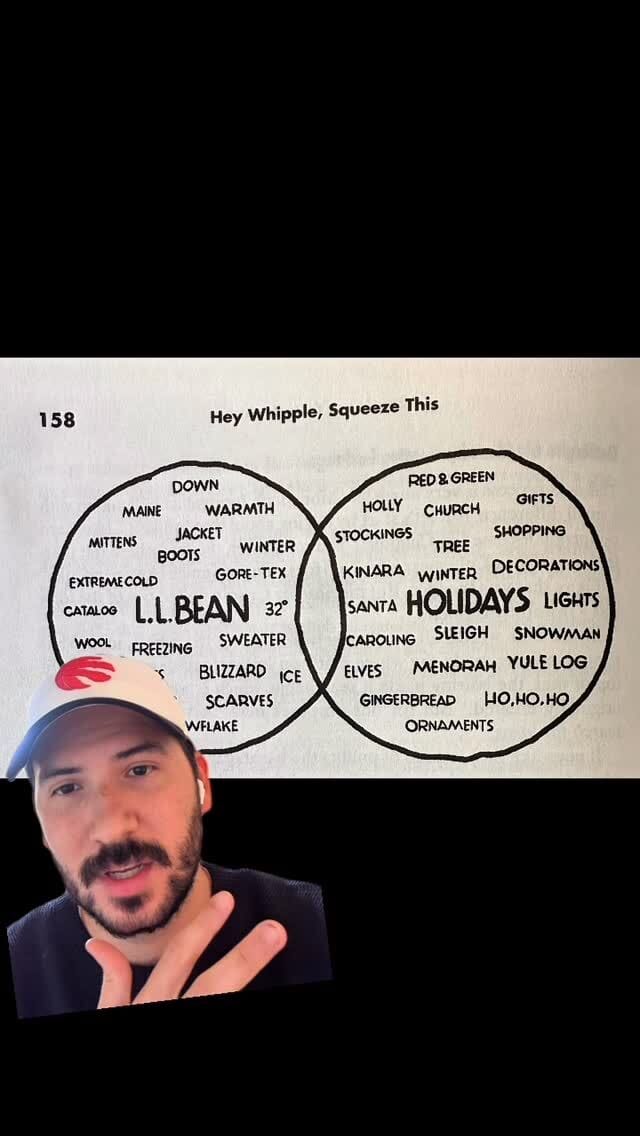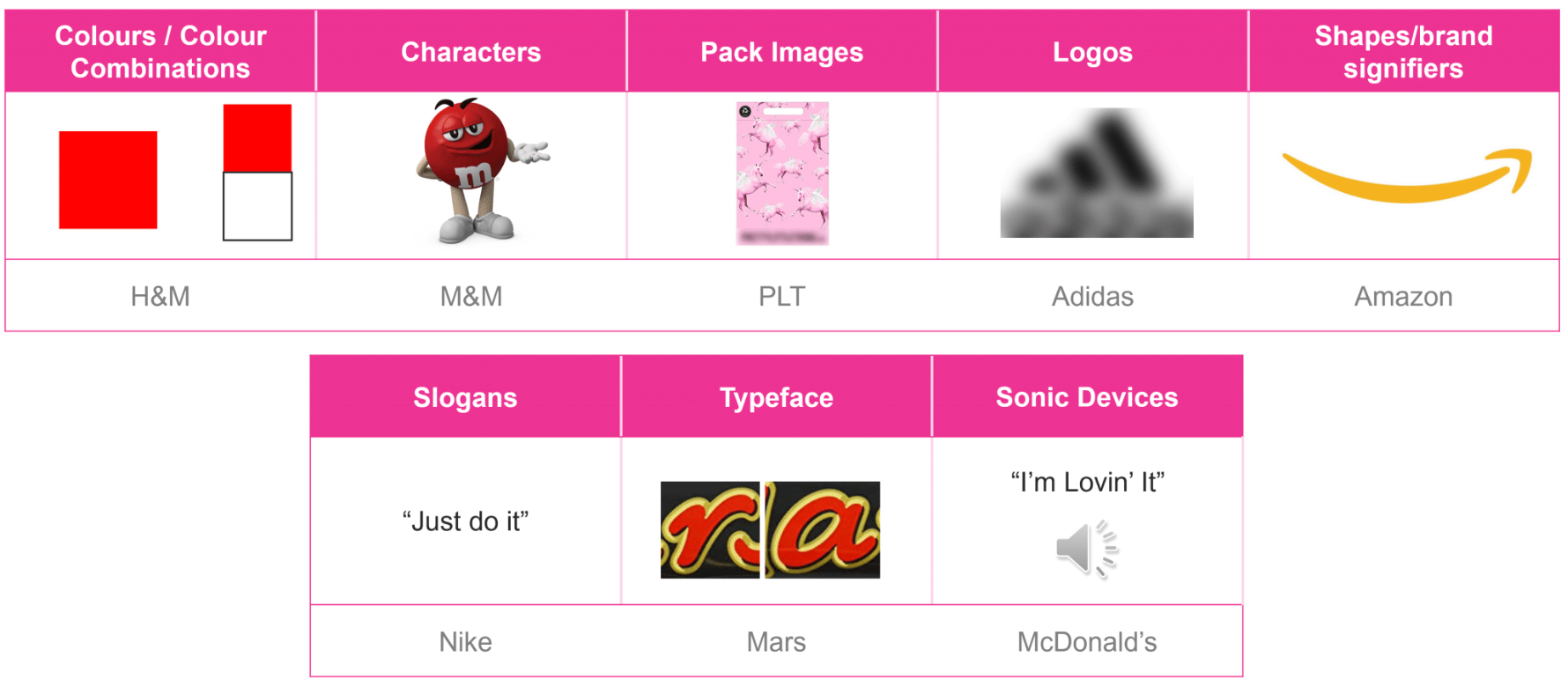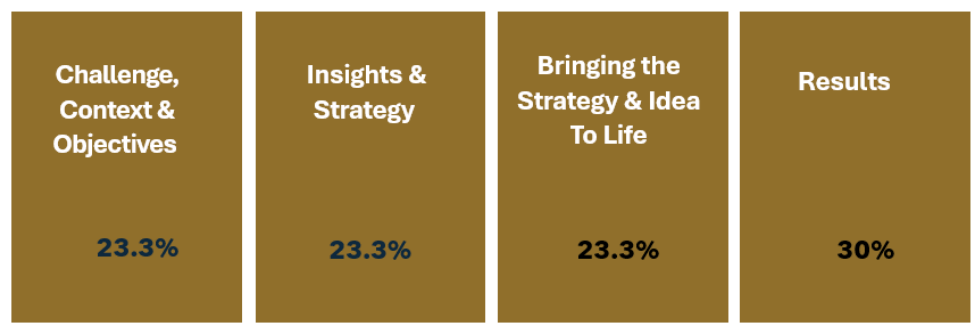- Marketing Chronicles
- Posts
- Artificial Intelligence Is Atrophying Your Brain
Artificial Intelligence Is Atrophying Your Brain
Treat AI like a drug, how brave is your organization, and why industry awards still matter
Welcome to Marketing Chronicles. A monthly dose of strategy and creativity for brands, agencies, and businesses — delivered on the second Wednesday of every month. If you like what you see and you’re not already a subscriber, join us for free.
Hello Marketing Chroniclers. It’s been a busy month of ideas — below are some of my handpicked selection of reflections that I believe will add value to your knowledge base.
Drop me a line on LinkedIn if anything stands out to you!
PS: if there are any particular topics you’d like be to dig into, just reply to this email with your thoughts!
Enjoy 🧠
This edition is supported by Tracksuit, a beautiful, affordable, always-on brand tracking dashboard that helps marketers and agencies prove the impact of brand building.
I’ve always found that setting SMART brand objectives to be difficult without having a clear baseline of where my brands stand — until now. The folks over at Tracksuit have developed an elegant tool that helps you understand how your activities are impacting your brand's health metrics without breaking the bank.
IDEAS DEPT./
A Creative Method For Coming Up With Brand Platforms
How do you come up with great ideas that can be simply communicated? Enter the world of hashtags...
The basics of the concept are simple: start by coming up with the "book cover" then write the book itself.
When you receive the brief, identify 2 "galaxies" that encapsulate what the brief is asking for. This could be the brand itself and an occasion, or a feeling, or a category, etc.
List out as many words you can think of related to each galaxy. Stare at it for a while, until something jumps out.
Connect the 2 words from each galaxy into a simple hashtag and begin ideating concepts off of that.
And there you have it - now you not only have a concept, but you also have a platform (the hashtag) that more concepts can originate from.
This is one of the many methods Luke Sullivan describes in his book "Hey Whipple, Squeeze This" that can help agencies navigate the creative process. I've seen it in action, and it hardly ever fails.
BRAVERY DEPT./
How Brave Is Your Organization?
Most brands have no idea of how to effectively evaluate creative. It's no fault of their own, except for the black & white reality in which most businesses live that prevents them from navigating the "grey areas" with confidence.
Tech companies have tried to solve this problem with A/B testing - but by now we know this is only effective for short-term performance campaigns that aim to drive action.
The big stuff - aka, the big brand idea campaigns that actually drive market share and reduce price sensitivity - are still being killed for no apparent reason except for fear of taking risks or personal preferences by the senior manager on the project.
The downside of NOT taking risks is far more damaging to brands than actually going for it.
Too many dollars are being wasted in "safe" creative that never breaks through. Meanwhile, bold and courageous creative is all upside (unless, of course, one is crossing ethical lines, at which point the negative publicity can actually be damaging).
Strategists are often the second line of defence in evaluating creative (after the creative directors, of course). I've seen great ideas being killed even before they make it to the client, with the fear that the client was not gonna like it.
How do we keep pushing brands to be more courageous? I've seen agencies use a "bravery scale" where it's not necessarily about getting a client who currently sits at a 3 to reach a 10, but instead to go from a 3 to a 5. And then the following year, from a 5 to a 6. And so on.
This is a journey, but I'm curious to hear from others how they have navigated it from both the brand-side and agency-side!
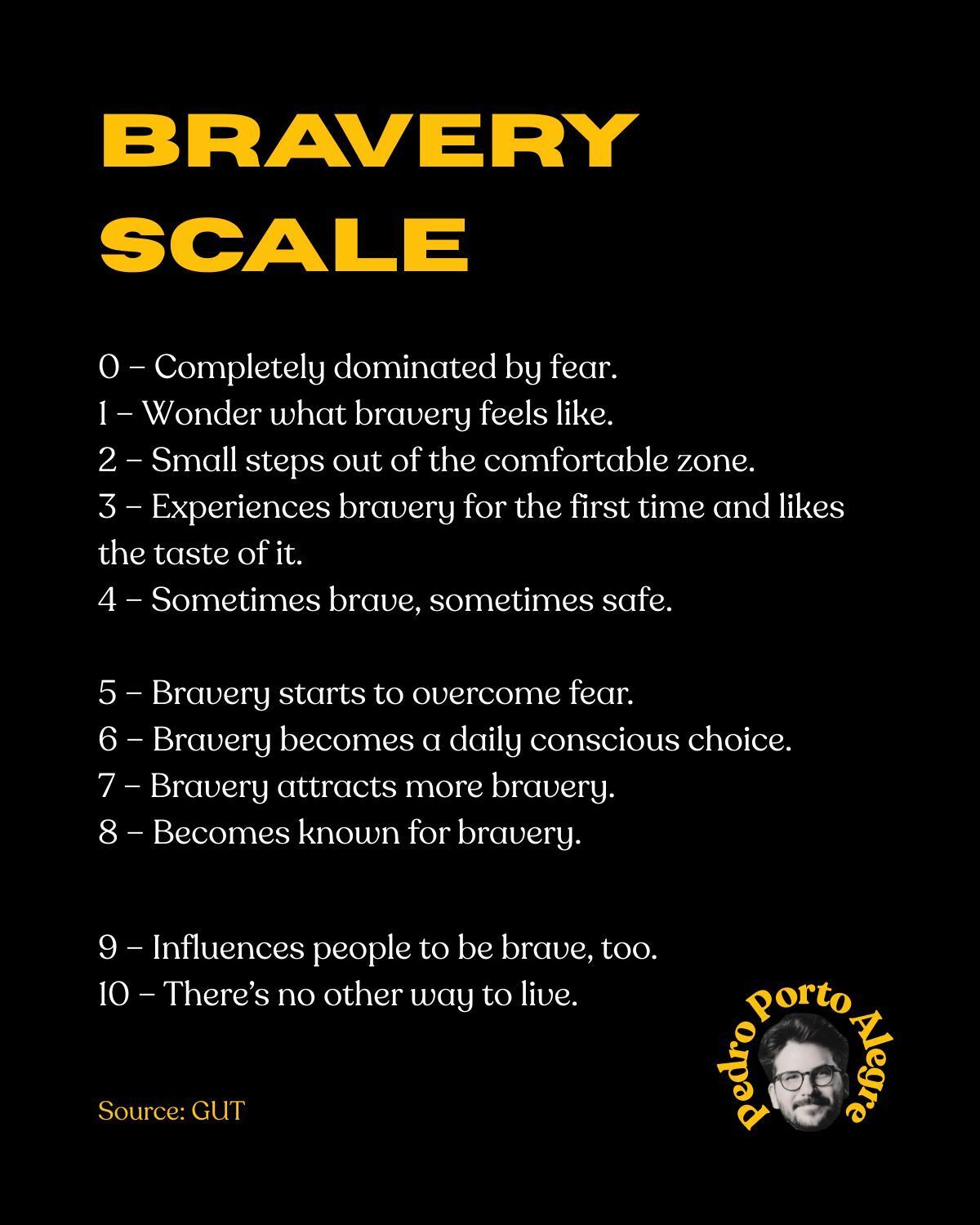
REAL TALK/
Do You Have A Brand or Just Another Product?
So many brands are just a category these days.
A brand of batteries
A shoe company
A software product
A local beer
A glasses shop
But a brand, when properly built and fostered, is really about 2 things: POSITIONING and DISTINCTIVENESS.
Positioning is the single most misunderstood concept in marketing. Oftentimes brands will write an entire positioning paragraph, as if their customers had the bandwidth to store all that information in their minds. This becomes more an exercise of self-patting on the back, than anything commercially relevant.
Securing the most valuable real estate on the planet (a corner of consumers' minds) requires a RELENTLESS commitment to consistent messaging. What are the 1-3 things you want consumers to think of when they see your brand? That's proper positioning.
Distinctive brand assets, or DBAs for short, are arguably just as important. If consumers cannot recognize your brand without your name spelled out, you need to continue to invest into building such assets (note, there may be only 100 brands in the WORLD that consistently and broadly pass this test today, therefore you probably need to invest more in your brand!).
DBAs are colours, typographies, characters, sounds, package shapes, slogans, and of course, the logos themselves. Most brands shouldn't worry about having any more than 3-5 of these.
Remember, having a BRAND isn't about "brand love". That's an incredibly subjective thing to measure. Having a brand is about building mental structures that facilitate consumer choice.
Humans' brains are naturally lazy to conserve energy. Brands serve the purpose of being remembered in the right consumption occasions.
And if your brand is just a category, then your competitors who are working towards building mental availability will simply bypass you in the consumer journey.
Most consumers don't buy the best option. They buy the option they remember best.
AWARDS/
Why Industry Awards Still Matter
Though commercial success should be the ultimate bar by which agencies are measured, there's something to be said about why we entered this craft in the first place.
There’s a love for it that we must not only celebrate, but study. And this is one of the reasons why I still believe industry awards are so important.
Yes - awards may help in reducing client anxiety and nudge decision makers - but more importantly it's a way for agency folks to see how the individual parts of their craft are doing relative to their peers. Assuming a fair and just judging process and set of submissions, this is where we get to put our craft under the microscope.
That’s the only form of competition we have that not only analyses the craft itself but also pushes us to get better by being inspired by our peers.
It would be a shame for folks who love this industry to bypass the experience of being critiqued and celebrated by industry peers because they think award shows are just fluff.
There's much more to it - awards are about our commitment to improving the craft and celebrating those who are distinguishing themselves in our industry.
If you love the craft and enjoy competition, I still believe there's a place for awards in every agency's budget.
RETAIL INDUSTRY/
The Canary In The Coal Mine
Retailers are in a tough spot right now - tariffs, fluctuating exchange rates, and inflationary pressures are slowing down demand. The canary in the coal mine: cardboard box sales are down to its lowest shipments in four years.
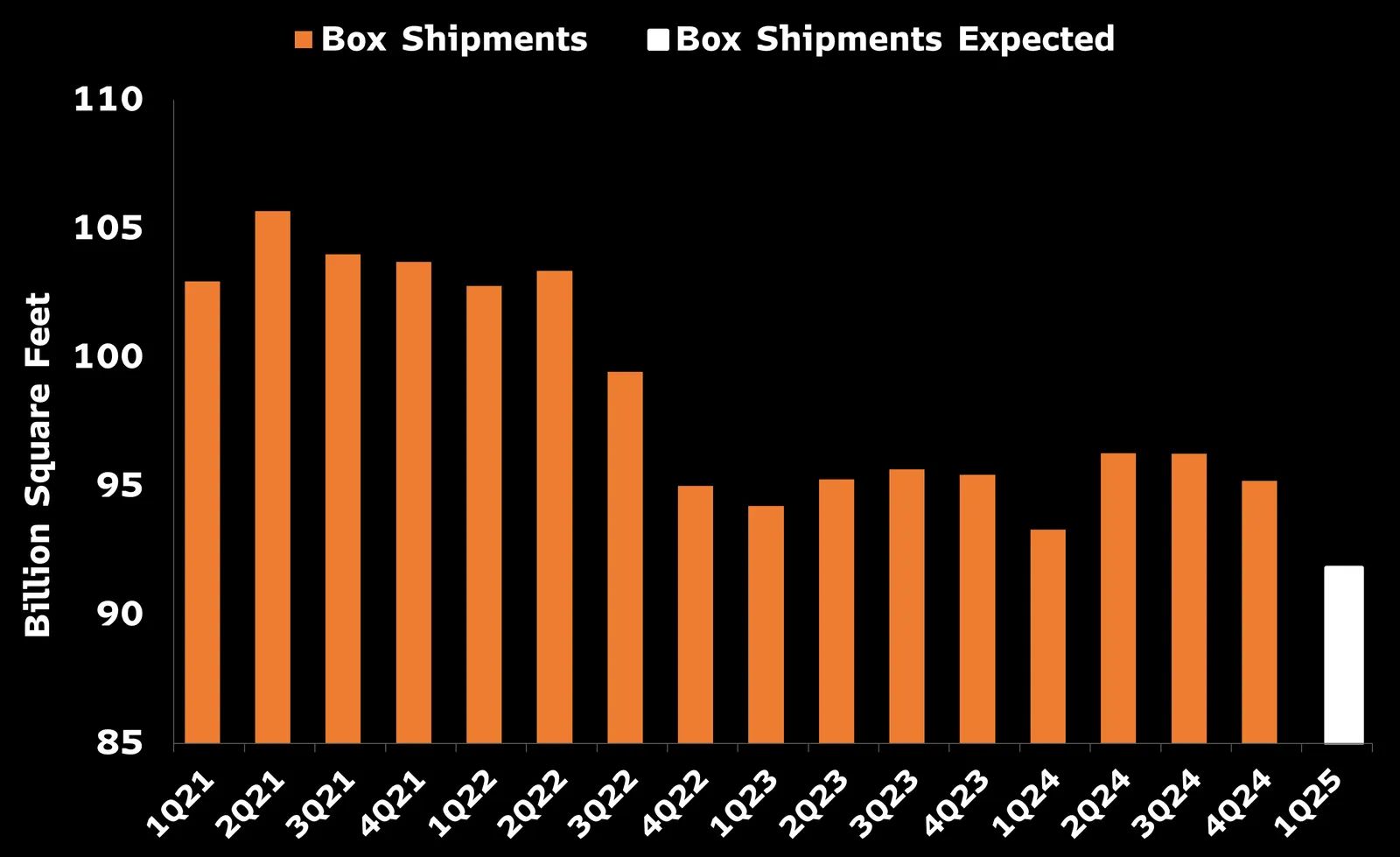
How can retailers equip themselves to navigate these times? Deep discounting can be tempting, but it positions the brand - every business' most valuable asset - as a sacrificial lamb in exchange for short-term sales.
For a potential alternative solution, we can look at Uniqlo.
Their viral round shoulder bag helped drive foot traffic into the stores by building mental availability across younger generations.
They invested in a world-glass shopping experience and loyalty program that very few can compete against.
They reduced store count, but increased store footprint.
They built a state of the art "management cockpit" to forecast demand.
They struck celebrity collabs to drive interest with niche groups.
Possibilities are endless.

Uniqlo’s iconic “shoulder bag”.
Go beyond the obvious: asses your marketing mix’s 4Ps, look at your strategy and determine what no longer holds true, think laterally about what else can be done.
Discounting can be tempting, but there are other more impactful levers that can be pulled that will not only drive short-term impact, but most importantly build a moat around your business.
This won’t be the last time that the waters will get choppy. Savvy retailers are thinking beyond the cardboard boxes of today…
A.I./
Treat AI Like A Drug
This picture has been circulating the internet for the past few days, and I must say that this is in fact quite an alarming trend. Though this has been happening since before the democratization of LLMs, I suspect things will only get worse.
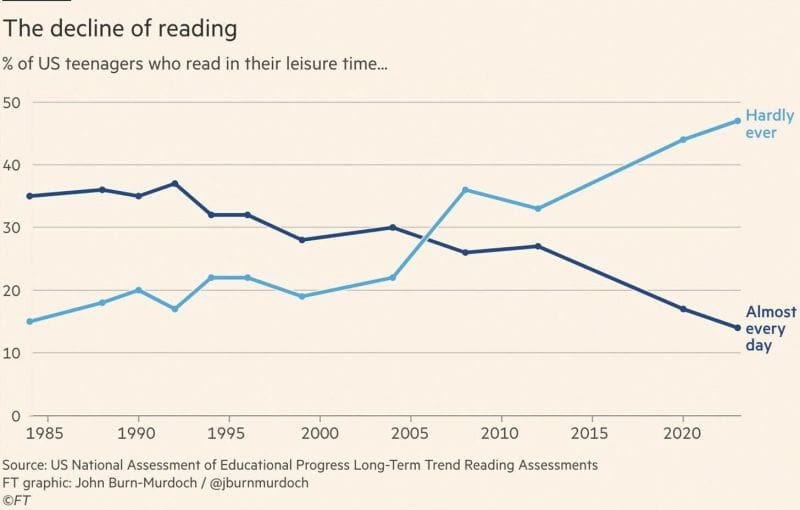
For starters, the average sentence length has been declining since the 1930s. In 1931, the average number of words per sentence was around 22. Fast-forward to 2025, and that number is down to 14.
Sounds trivial, but longer sentences require higher levels of concentration. And when paired with the this overarching trend of people reading less and less and instead opting for bite-sized content on the internet, we're putting our most important organ at risk of becoming mush.
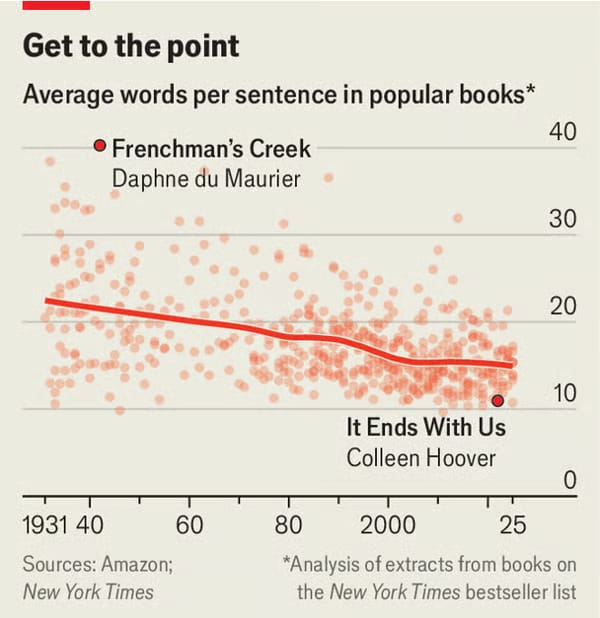
There are small studies starting to show that people over-relying on AI for every day tasks are seeing a reduction in interconnectivity between certain areas of their brain (of course, more research into this needs to be done, but it's a weird - yet consistent with what we're seeing - finding).
We should treat AI like a drug:
If you're under 25 and your brain isn't fully formed yet, avoid using it.
If you're an adult over 25, use it in moderation.
Keep your brain fit by reading and writing for leisure. While it would be silly to recommend against using AI for commercial purposes, as humans we should know what we're giving up.
When computers were invented, it only took one generation for people to forget how to write cursive writing. While this is a trivial trade-off that has largely benefitted us, the deal we're making with AI is much more consequential.
Take driving, for example. Today people walk less and less, and in turn we're seeing the downstream effects of a more comfortable - yet morbid - existence.
Reading and writing are the two best ways humans have to learn and process information. And while we don't need to "remember" as many things anymore, I doubt that it would be wise to give up of what makes us human - moral agency, language, rationality, and self-consciousness; all of which are up for grabs by AI.
INSPIRATION/
Visit Nebraska: “Honestly, It’s Not For Everyone”
Far too often brands will try to push the bounds of what they can credibly own.
Coffee shops claiming to “inspire and nurture the human spirit”
Soda brands positioning themselves as “fuellers of societal change”
SaaS companies thinking they’re “catalysts of human potential”
But every once in a while, a good marketer comes along and says: “enough of this BS”. Let’s get real with our customers.”
Nebraska went from the 50th most visited state in the US, to 45th — and a +18% increase in tourism revenue.
That’s a great jump, and though they’re still not a “hot destination”, the tourism board of Nebraska realized that being real about themselves and uncovering that undeniable truth about themselves was great for business.
This has got to be one of my favourite tourism campaigns in recent years.
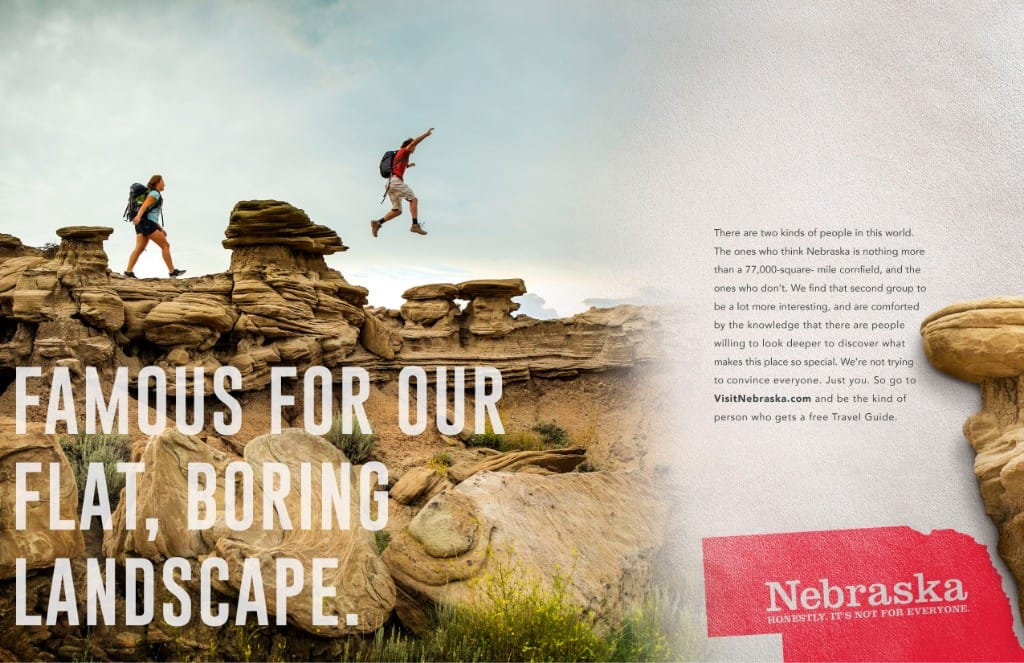
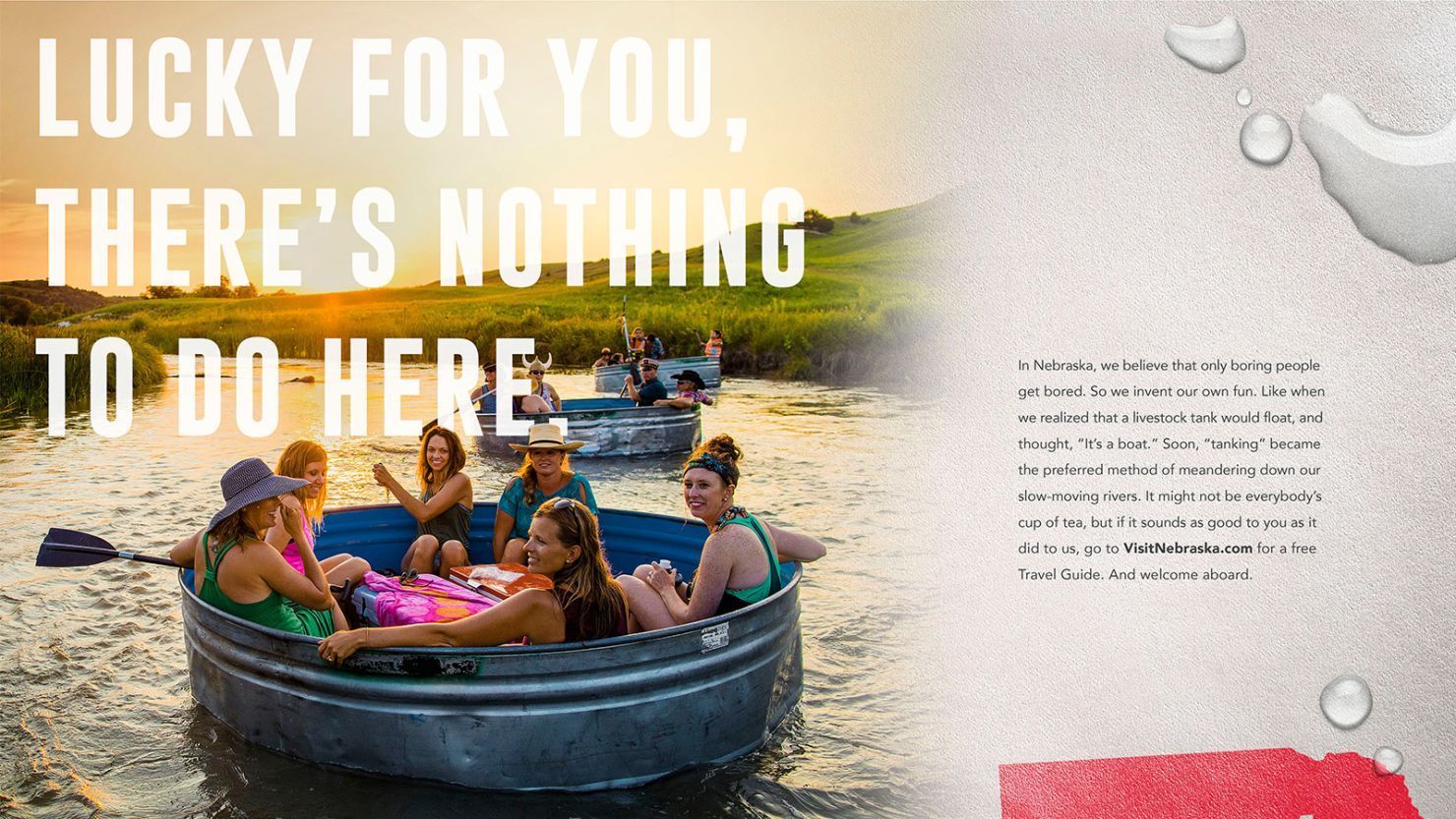
BRAIN FOOD/
Strategist’s Delight (What’s On)
Podcast Episode: Rory, Elfried and Krish on AI (The Bottleneck Podcast)
TV Series: The Girlfriend (Amazon Prime)
Article: The End of Thinking (Derek Thompson)
QUOTE/
Humans vs Technology
“We are so fixated on how technology will out-skill us that we miss the many ways that technology can de-skill us.”
More of PPA:
🗣 For speaking engagements, you can reach me at [email protected]
💌 In case you missed it: Warby Parker’s Unfinished Business In Canada — Despite having built an exceptional customer experience, the eyewear player must tackle physical availability and awareness to win Canadian consumers
PPA
Pedro Porto Alegre is a seasoned marketing strategist with in-depth experience building brand and communications strategies for top-tier B2C and B2B organizations across North America. His repertoire extends from crafting and executing integrated multi-media brand marketing campaigns to the commercialization of performance-driven innovations for multimillion-dollar and nascent brands alike.


